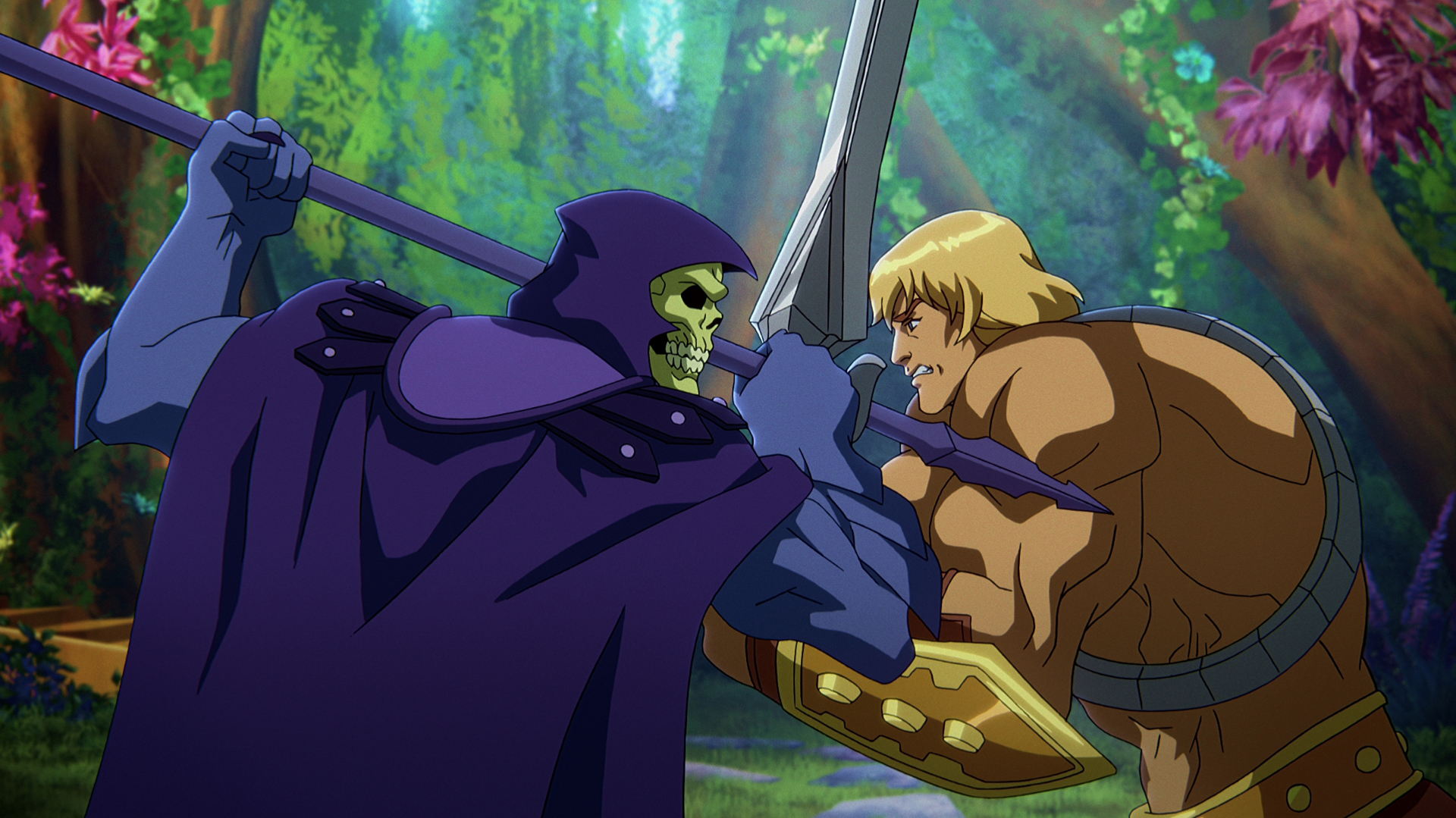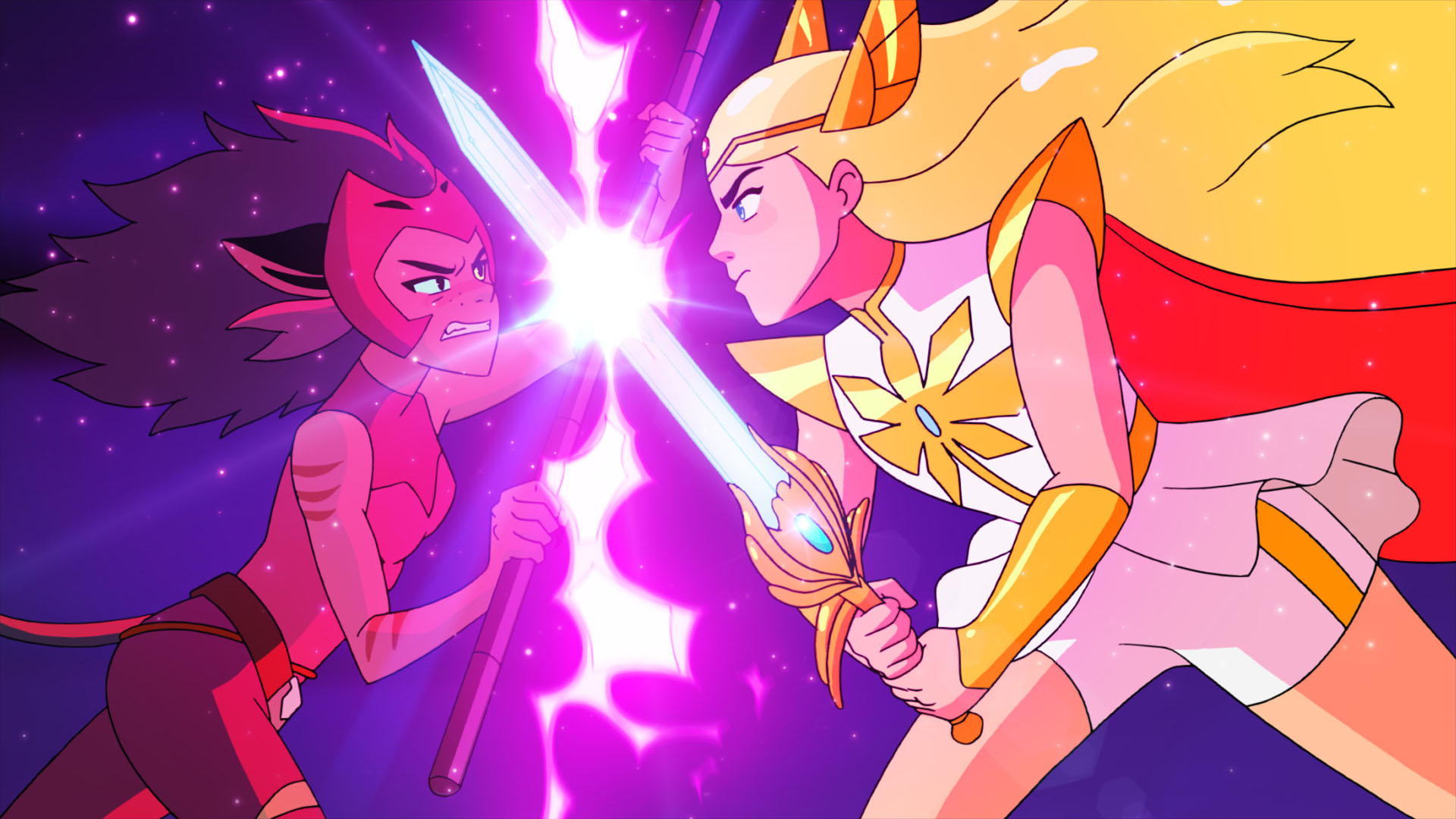Masters of the Universe: He-Man and more explained ahead of Netflix's new show

In hindsight, it has to go down as one of the biggest errors in licensing history. When George Lucas was shopping around the action-figure rights for an upcoming space opera called Star Wars, the powers-that-be at US toy giant Mattel decided to pass.
To be fair, in the mid-’70s, movie and TV licenses weren’t always massively lucrative for toy manufacturers, but their oversight meant that the company behind Barbie found itself playing catch-up with their rivals at Kenner.
Mattel didn’t take it lying down, however, and instead of capitalizing on someone else’s franchise, they decided to create an epic fantasy setting of their own. Led by He-Man and his evil rival Skeletor, Masters of the Universe quickly grew into a pop-culture behemoth, as it was turned into a massively popular cartoon series that – conveniently – functioned as a highly effective commercial for the toys.
Now, with Kevin Smith’s sequel/reboot Masters of the Universe: Revelation heading to Netflix on July 23, we look back at the history of He-Man, Skeletor and Eternia, a handy guide to help you tell your Moss-Men from your Mer-Men.
By the power of Grayskull!
- The best Netflix shows: 30 fantastic series worth bingeing
- The Witcher season 2 explained
- Invincible season 2: what we know

What is Masters of the Universe?
Along with Transformers, Masters of the Universe is arguably the most successful toy marketing campaign in history – a precision-guided, multimedia assault on the hearts and minds of ’80s kids that transformed a range of muscle-bound action figures into must-have items on every birthday and Christmas wishlist.
Having turned down that lucrative Star Wars deal, Mattel instead decided to create its own franchise. Launched into stores in 1982, it focused on He-Man and his ongoing feud with bony nemesis Skeletor. While the characters’ impressive physiques owed a clear debt to Frank Frazetta’s Conan the Barbarian, this was a world populated by all-new heroes and villains. (It’s interesting to note that, before Masters of the Universe, Mattel had picked up the rights to the Arnold Schwarzenegger-starring Conan movie. Lawyers later decided that the He-Man line hadn’t ripped off Conan.)
Sign up for breaking news, reviews, opinion, top tech deals, and more.
But Masters of the Universe – which was almost known as Lords of Power, until a Mattel exec pointed out that the title had potential religious associations – had a problem. Unlike Star Wars, this was a toy line without a backstory.
Mattel navigated that obstacle in innovative fashion, packaging a mini-comic with every action figure – later comics were even produced by DC.
The toy company’s real genius, however, was teaming up with animation studio Filmation – the outfit behind Star Trek: The Animated Series and various ’60s DC cartoons – for a now-iconic TV show. Debuting in 1983, the 130 episodes they produced were a hit around the world, destined to be repeated again, and again, and again.

What is Masters of the Universe about?
As with ThunderCats, MASK, Teenage Mutant Ninja Turtles and seemingly every other action cartoon of the era, Masters of the Universe’s extremely catchy opening credits do an excellent job of explaining the premise of the series:
The TL;DR version goes as follows: on the alien world of Eternia, Prince Adam is transformed into He-Man – self-proclaimed “most powerful man in the universe” – whenever he holds aloft his magic sword and shouts, “By the power of Grayskull!” The iconic Castle Grayskull is the seat of mystical power on Eternia.
Alongside a rotating team of superpowered humans, aliens and monsters known as the Heroic Warriors (yes, really), He-Man spent every episode foiling the nefarious schemes of Eternia’s bad-guy-in-chief, Skeletor. Based out of Snake Mountain, Skeletor teamed up with his own selection of henchmen (and woman) known as – you guessed it – the Evil Warriors.
Some big-name TV writing talent got their big breaks on Masters of the Universe, including regular Batman: The Animated Series scribe Paul Dini, and Babylon 5 creator J Michael Straczynski.

Who are the characters in Masters of the Universe?
Considering that most of the original male characters in Masters of the Universe were based on the same pumped-up sculpts – wearing identical furry underwear – there’s a remarkable amount of variety in the roster of heroes and villains. That said, the character names display significantly less imagination.
On the side of truth and justice, just three characters are aware of He-Man’s secret identity: weapons specialist Man-at-Arms, floating magician Orko, and the Sorceress of Castle Grayskull. Among the other heroes fighting the good fight are military leader (and Man-at Arms’ daughter) Teela; human battering ram Ram-Man; bird-human Stratos; master of disguise Man-E-Faces; the Inspector Gadget-like Makaneck; and Cringer, Prince Adam’s perennially frightened pet tiger who is transformed into grizzled steed Battle Cat when Adam becomes He-Man.
Over on Team Skeletor, the character names are even more functional: Beast Man is a man with beast-like qualities; Mer-Man is a man with dominion over the seas; Tri-Klops is a man with three eyes; Trap Jaw is a man with a metal mouth and a bionic arm; and Evil-Lyn is a woman named Lyn who just happens to be, um, evil.
In later toy ranges, their ranks were expanded by the even more unlikely likes of Moss-Man and the skunk-like Stinkor – their respective action figures even came with appropriate smells.

Why is everyone talking about Masters of the Universe?
Kevin Smith, professional geek and director of Clerks, Jay and Silent Bob Strike and Dogma, is heading back to Eternia with a high-profile new series called Masters of the Universe: Revelation, available on Netflix from July 23, 2021.
A sequel to the original cartoon, the story takes place in an Eternia where the magic has disappeared, plunging many of the franchise’s classic heroes and villains into an all-new battle. With anime-inspired visuals, the show looks fantastic, but it’s the cast that’s the real headline-maker. Alongside Supergirl’s Chris Wood as He-Man/Prince Adam, Mark Hamill (aka Luke Skywalker) plays Skeletor, Buffy’s Sarah Michelle Gellar is Teela, Game of Thrones vets Liam Cunningham and Lena Headey play Man-at-Arms and Evil-Lyn, respectively, while Kevin Smith regular Jason Mewes is Stinkor. There’s also a return for original Skeletor voice actor Alan Oppenheimer as Moss-Man.
Check out the Masters of the Universe: Revelation part 1 trailer below:
How does She-Ra fit in?
Making her TV debut in 1985 TV movie The Secret of the Sword, She-Ra is He-Man’s similarly powerful twin sister.
Living on the planet of Etheria, Princess Adora gains superpowers when she holds aloft her magic sword and yells, “For the honor of Grayskull”. Along with her friends from the Great Rebellion, she fights to save Etheria from the tyranny of Skeletor’s former mentor, Hordak, and his Evil Horde.
She-Ra: Princess of Power ran for 93 episodes, and like the parent show, was also an extremely successful toy commercial.
The character was rebooted in 2018 in the highly acclaimed She-Ra and the Princesses of Power (one of the best Netflix Original animated series), though that show apparently has no crossover with Masters of the Universe: Revelation.

Is the new Netflix show the first attempt to reinvent Masters of the Universe?
Masters of the Universe: Revelation is the latest in a long line of reboots.
In 1987, Dolph Lundgren and Frank Langella headlined a live-action movie, which brought He-Man, Skeletor and their respective entourages to Earth. It was a critical and box-office disappointment, which may have owed something to the fact it looked nothing like the He-Man stories kids recognized from their action figures and TV. Orko and other stalwarts of the cartoon series were also absent – largely because creating them in live-action was beyond the effects capabilities of the time.
Masters of the Universe then got a ’90s makeover in The New Adventures of He-Man, a cartoon series which transported He-Man and Skeletor into outer space. Despite making rather more concession to story arcs than the original – and adding plenty of new characters – it never managed to capture the imagination in the same way.
He-Man made another comeback in 2002. Mattel had relaunched the Masters of the Universe toy line with all-new character sculpts, and unleashed Cartoon Network series He-Man and the Masters of the Universe to help promote the brand. Although character designs were faithful to the 1980s original, the show played around with some of the character backstories as it developed a more complex mythology. It also made sure that the scrawny Prince Adam looked radically different to his pumped-up alter-ego – let’s face it, his disguise in the original Masters of the Universe is worse than Clark Kent’s.
Masters of the Universe: Revelation is set to reinvent the Masters of the Universe story once again. Although it’s nominally a sequel, there’s not really a definitive canon to contradict, thanks to the unconventional way the franchise evolved.
When Mattel released the first He-Man toys, there was no backstory, so a mythology subsequently grew out of comics, the TV show and whatever appeared on toy store shelves. Characters created for the cartoon would be turned into action figures – even the hovering Orko – while action figures would travel the other way. In other words, Kevin Smith and his team on Masters of the Universe: Revelation are in a privileged position – working with established, beloved characters without many of the constraints of continuity they’d encounter in other franchises.
Masters of the Universe: Revelation: Part One streams on Netflix from July 23, 2021. You can learn more about the origins of He-Man, Skeletor and Eternia in Netflix documentaries The Toys That Made Us, and The Power of Grayskull: The Definitive History of He-Man and the Masters of the Universe.
Richard is a freelance journalist specialising in movies and TV, primarily of the sci-fi and fantasy variety. An early encounter with a certain galaxy far, far away started a lifelong love affair with outer space, and these days Richard's happiest geeking out about Star Wars, Star Trek, Marvel and other long-running pop culture franchises. In a previous life he was editor of legendary sci-fi and fantasy magazine SFX, where he got to interview many of the biggest names in the business – though he'll always have a soft spot for Jeff Goldblum who (somewhat bizarrely) thought Richard's name was Winter.
